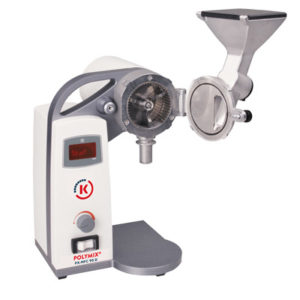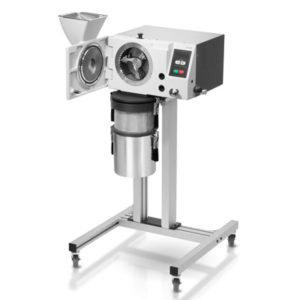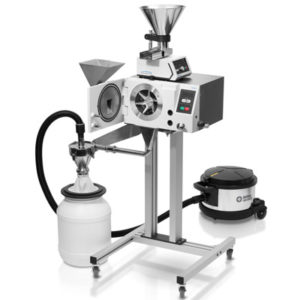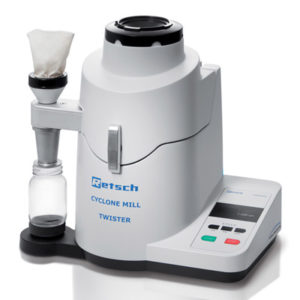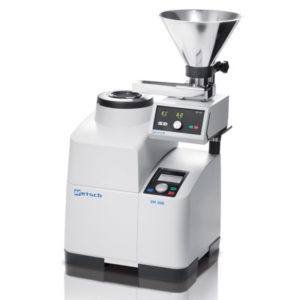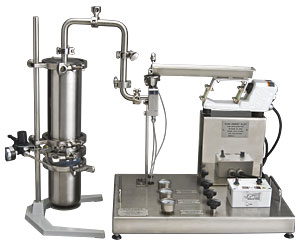Grinding lithium manganese oxide offers several significant benefits that positively impact its performance and applications, especially in lithium-ion batteries. The process of grinding involves reducing the particle size of the material, leading to improved reactivity. By increasing the surface area of the material, grinding facilitates more effective contact between lithium ions and the oxide during the battery’s charge and discharge cycles. This enhanced electrochemical reactivity results in improved battery performance.
Furthermore, fine grinding of lithium manganese oxide enhances its electrochemical properties. The smaller particle size allows for faster lithium-ion diffusion within the electrode structure, leading to improved ion transport and enhanced rate capability. Consequently, the battery can deliver higher power output, making it well-suited for applications requiring quick charging and discharging, such as in electric vehicles and high-performance portable devices.
In addition to better performance, finely ground lithium manganese oxide exhibits increased capacity retention. The reduced particle size reduces the stress and strain on the crystal lattice, mitigating structural degradation during extended battery cycling. As a result, the battery can maintain its capacity over more charge-discharge cycles, leading to better capacity retention and a longer overall battery lifespan.
One of the critical advantages of grinding lithium manganese oxide is the enhanced energy density it provides. Energy density is a crucial factor in lithium-ion batteries, as it determines how much energy can be stored within a given volume or mass. By grinding the material to a finer particle size, the active material’s packing density within the battery electrode increases, allowing for a higher amount of lithium ions to be stored. This leads to an increase in the overall energy density of the battery, making it more efficient and powerful.
Additionally, finely ground lithium manganese oxide contributes to improved cycling stability. The smaller particle size and enhanced reactivity reduce side reactions and undesirable chemical processes during battery cycling. This results in better cycling stability, ensuring that the battery retains its capacity and performance over an extended period, making it more reliable and durable.
Moreover, grinding facilitates faster kinetic processes during battery operation. The smaller particle size allows for faster lithium-ion diffusion, increased electronic conductivity, and improved mass transport within the electrode material. This leads to reduced charging and discharging times, which is particularly advantageous in applications where quick power delivery is essential.
Lastly, fine grinding ensures a more uniform distribution of the active material in the battery electrode. This uniformity prevents localized variations in electrode performance and minimizes concentration gradients, resulting in improved overall battery efficiency and performance.
In order to effciently reduce the particle size from granular to less than 10.0 microns, a two step process must be employed.
The first step is to reduce the particle size of granular lithium manganese oxide to less than 80.0 microns using a rotor mill and ensure a virtually dust-free process in a laboratory.
- Preparation and Safety: Begin by preparing the granular lithium manganese oxide for the milling process. Ensure that the material is dry and free from contaminants. Safety measures, such as wearing appropriate personal protective equipment (PPE) like lab coats and gloves, should be observed.
- Vibratory Feeder Setup: Set up a vibratory feeder to facilitate a consistent and controlled feed rate into the rotor mill. The vibratory feeder helps regulate the flow of the granular material into the mill, ensuring optimal milling conditions.
- Rotor Mill Selection: Choose a suitable rotor mill that is capable of achieving the desired particle size reduction. Ensure the mill is equipped with a rotor and a sieve screen with openings appropriate for reducing the particle size below 80.0 microns.
- Adjustment of Rotor Mill Parameters: Calibrate the rotor mill settings, including rotor speed and gap between the rotor and the sieve screen. These adjustments will impact the efficiency of the milling process and the final particle size.
- Connect Cyclone Collection and Vacuum System: Attach a cyclone collection system to the rotor mill’s output to capture the milled particles efficiently. This system will separate the fine particles from the air and direct them into a collection container. Additionally, connect a vacuum system to minimize the release of dust into the laboratory environment.
- Milling Process: Start the rotor mill and set the vibratory feeder to initiate the milling process. The rotor mill’s mechanical forces will crush and grind the granular lithium manganese oxide, reducing its particle size to the desired level.
- Cyclone Collection and Vacuum Operation: As the milled particles are produced, the cyclone collection system will efficiently separate them from the air stream and direct them into the collection container. The vacuum system will continuously draw air and dust from the milling process, ensuring a virtually dust-free environment in the laboratory.
- Particle Size Analysis: Periodically collect samples during the milling process to analyze the particle size distribution. Particle size analysis can be performed using techniques such as laser diffraction or microscopy to verify that the particle size is below 80.0 microns.
We recommend using our SR300 Rotor Beater Mill or SK300 Cross Beater Mill for larger volums and the Ultra Centrifugal or Twister Cyclone Mill for smaller volumes. All of these mills process samples efficiently through the milling chamber. Optional cyclone collection and feeders are available.
-
Cutting Mills, Grinding & Milling, Hammer Mills
Kinematica™ Polymix™ PX-MFC 90 D Hammer or Cutting Mill
Cutting Mills, Grinding & Milling, Hammer MillsKinematica™ Polymix™ PX-MFC 90 D Hammer or Cutting Mill
Analysis or quality control requires finely ground samples. Easy to change grinding attachments and sieves extend the range of any samples that can be processed. Simple handling, high user safety and efficient grinding results are just a few of the advantages of this mill.
SKU: n/a -
Grinding & Milling, Rotor Mills
SK 300 Cross Beater Mill
The Cross Beater Mill SK 300 is suitable for coarse and fine size reduction, either in batches or continuously. It can process medium-hard and brittle materials and is easy to operate.
With its adjustable speed of 2,000 to 4,000 rpm the SK 300 is intended for universal use: from sample preparation in laboratories up to preparing sample batches in pilot plants or production facilities.
SKU: n/a -
Grinding & Milling, Rotor Mills
SR 300 Rotor Beater Mill
The Rotor Beater Mill SR 300 is suitable for coarse and fine size reduction, either in batches or continuously. It can process dry, soft, medium-hard, organic and inorganic substances.
With its adjustable speed of 3,000 to 10,000 rpm the rotor beater mill SR 300 is intended for universal use: from sample preparation in laboratories up to preparing sample batches in pilot plants or production facilities. The grinding chamber, the feed hopper and the material inlet are completely made from high quality stainless steel.
SKU: n/a -
Grinding & Milling, Rotor Mills
TWISTER Cyclone Mill
The cyclone mill TWISTER is specially designed for the processing of foods and feeds for subsequent NIR analysis. The optimized form of rotor and grinding chamber generates an air jet which carries the ground sample through the integrated cyclone into the sample bottle. The air jet prevents the material from heating up, thus preserving the moisture content.
The provided sieves guarantee an optimum particle size distribution so that it is not necessary to recalibrate the NIR spectrometer. The rotor speed can be adjusted in 3 steps allowing for perfect adaptation to the sample requirements. Cleaning the mill is quick and easy as the air jet effects a complete discharge of the material from the grinding chamber.
This new cyclone mill in proven quality optimizes the reproducible sample preparation to NIR analysis thus allowing for meaningful and reliable analysis results.
SKU: n/a -
Grinding & Milling, Rotor Mills
ZM 200 Ultra Centrifugal Mill
The Ultra Centrifugal Mill ZM 200 is a high speed rotor mill with unmatched performance. It is used for the rapid size reduction of soft to medium-hard and fibrous materials.
Because of the efficient size reduction technique the ZM 200 ensures the gentle preparation of analytical samples in a very short time. The comprehensive range of accessories including a large variety of ring sieves and rotors as well as collection systems makes the Ultra Centrifugal Mill a versatile instrument that can be easily adapted to varying applications. The optional Vibratory Feeder is load-controlled via an interface and ensures a uniform grind at maximum output rate. When using a cyclone, the sample material is additionally cooled by the air stream and more rapidly discharged from the grinding chamber via the cassette pan with outlet. This effect can be increased by connecting a vacuum cleaner.
With thousands of installations, the ZM 200 has become a standard for food and feeds, for the chemical industry as well as for agricultural testing.
SKU: n/a
To further reduce the particle size of the lithium manganese oxide particles from 80.0 microns to less than 10.0 microns or finer, a jet mill can be utilized.
A jet mill is a high-energy milling machine that uses compressed air or gas to accelerate particles and achieve ultra-fine grinding. Here’s how to proceed with the process:
- Preparation: Ensure that the particles obtained from the rotor mill are dry and free from contaminants. Proper preparation of the material will ensure effective and efficient milling in the jet mill.
- Jet Mill Setup: Set up the jet mill in the laboratory, following the manufacturer’s guidelines. Check and calibrate the jet mill’s operational parameters, such as air pressure and feed rate to achieve the desired particle size reduction.
- Feed the Material: Carefully introduce the particles obtained from the rotor mill into the jet mill’s grinding chamber. The feed rate should be controlled to maintain a steady and uniform flow of particles.
- Milling Process: As the particles enter the jet mill’s grinding chamber, they are subjected to high-velocity streams of compressed air or gas. The kinetic energy from the gas stream causes collisions between the particles, leading to further size reduction. The jet mill’s internal classifier separates the particles based on size, allowing only the fine particles to exit the mill.
- Adjustment of Parameters: During the milling process, monitor the particle size distribution and adjust the jet mill’s parameters if necessary to achieve the desired size range (less than 10.0 microns or finer).
- Particle Size Analysis: Collect samples of the milled material at regular intervals during the process. Analyze the particle size distribution using appropriate techniques such as laser diffraction or microscopy to confirm that the particles have reached the desired size range.
- Cyclone Collection and Vacuum System: As with the rotor mill process, employ a cyclone collection to capture the milled particles efficiently. This will ensure a clean and controlled laboratory environment, minimizing dust emissions.
By utilizing a jet mill after the initial rotor mill process, you can achieve the desired particle size of less than 10.0 microns or even finer. The high-energy impact and efficient particle separation in the jet mill make it an effective tool for producing ultra-fine particles, contributing to the enhanced properties and performance of the lithium manganese oxide for various applications.
-
Grinding & Milling, Jet Mills
Jet Mills
A jet mill grinds materials by using a high speed jet of compressed air or inert gas to impact particles into each other. Jet mills can be designed to output particles below a certain size, while continue milling particles above that size, resulting in a narrow size distribution of the resulting product. Particles leaving the mill can be separated from the gas stream by cyclonic separation.
SKU: n/a

